Sprawling across two continents and spanning an incredible nine time zones (having cut down from 11 in 2010), Russia is the largest country in the world by far. Within its vast boundaries lie some of the planet’s most luxurious palaces, extensive plateaus, highest mountains, coldest cities, strongest spirits, best ballet companies, and largest collections of stacking dolls. In terms of culture, literature is one of the country’s most notable displays; Russian authors such as Tolstoy, Bulgakov, Dostoyevsky and Nabokov are celebrated worldwide for creating some of the greatest works of the 19th and 20th centuries.
One of the fast-growing economies in the world, alongside the other BRICS countries, Russia is keen to internationalize its higher education system, and is investing in developing its universities and extending support for international applicants. Considering whether to study in Russia?
Universities in Russia
There are 24 universities in Russia featured within the QS World University Rankings® 2018, 10 of which are placed among the top 400 universities worldwide. Russia also boasts a substantial presence in the QS EECA University Rankings, a ranking of the 300 leading universities in emerging Europe and central Asia, with a whopping 95 Russian universities currently featured.
Over the past decade or so, higher education in Russia has undergone significant change, with 390 billion rubles (~US$6.7 billion) allocated between 2011 and 2015 for upgrading facilities and technical equipment at Russian universities, and improving training for teaching staff.
Additionally, in 2003, Russia signed up to the Bologna Process, pledging to bring its system in line with most other countries across Europe. This means many universities in Russia now offer a choice between a four-year bachelor’s degree and a five-year specialist degree. Russia’s higher education system was ranked 26th in the world, in the first edition of the QS Higher Education System Strength Rankings.
Lomonosov Moscow State University
Lomonosov Moscow State University (Lomonosov MSU)is Russia’s highest-ranked institution, topping the table of the QS EECA University Rankings for the third year in a row. Lomonosov Moscow State University has a current enrolment of 47,000 students, of which 7,000 are undergraduates and 4,000 are international. Academic areas at Lomonosov Moscow State University are wide-ranging, with a total of 380 departments, 39 faculties, 15 research institutes, four museums and six branch campuses in Russia and abroad.
The frontrunner among universities in Moscow, Lomonosov Moscow State University offers a campus which is not only close to the rich culture of Russia’s capital city (less than five kilometers from the center) but is also one of the grandest campuses you’ll ever come across, with the main building claiming the title of the tallest educational building in the world.
Novosibirsk State University
The best-performing Russian university under 100 years old, Novosibirsk State University was established in 1959 and is ranked second in the EECA rankings. Famed for its rapid rise in reputation, Novosibirsk State University has a fairly small student community (6,000). It’s located just outside of the city of Novosibirsk, Russia’s third most populous city after Moscow and Saint Petersburg. While less internationally known than these two, Novosibirsk boasts thriving cultural and nightlife scenes, making it another attractive option for prospective students.
Saint Petersburg State University
The oldest and one of the most prestigious universities in Russia, Saint Petersburg State University is ranked fourth in the EECA rankings as of 2018. Founded by Peter the Great in 1724, Saint Petersburg State University has a student population of around 30,000, of which around 3,000 are from outside Russia. Spread throughout the city of Saint Petersburg in over 400 buildings hosting 25 faculties, Saint Petersburg State University provides students with access to the city’s great array of museums, monuments and arts venues. Vasilievsky Island (in the historic city center) and Peterhof (a southwestern suburb) are where the university’s main two campuses can be found.
Tomsk State University
Ranked 11th in the 2018 EECA rankings (up from 20th in 2016/17), Tomsk State University is the oldest university in the Asian region of Russia, having been established in 1880. It currently has around 23,000 students in 23 faculty departments, and according to the most recent QS World University Rankings by Subject, is ranked in the top 300 in the world for modern languages and physics and astronomy.
Moscow Institute of Physics and Technology State University (MIPT)
Ranked 13th in the 2018 EECA rankings, Moscow Institute of Physics and Technology State University (MIPT) was founded in 1946 and has a unique education system in which students commonly conduct their research outside the university. MIPT is ranked highly in the subject ranking for physics and astronomy as well as for the broad subject area of natural sciences. It has a current student enrolment of almost 5,700, and its alumni include many notable scientists, physicists and politicians.
Also featured within the top 50 in the QS EECA University Rankings are: Bauman Moscow State Technical University (20th), National Research Nuclear University "MEPhI" (23rd), Moscow State Institute of International Relations (33rd), Peter the Great Saint-Petersburg Polytechnic University (36th), National Research University - Higher School of Economics (25th) and National Research Tomsk Polytechnic University (40th).
As the vastest country on earth, Russia offers many different lifestyles depending on the region you choose. Below you’ll find an overview of the country’s top cities for students, and what they have to offer.
Moscow 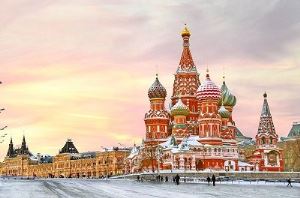
Ranked among the world's top 40 cities for students in the QS Best Student Cities 2017, Russia’s capital city has a global appeal. Steeped in both contemporary and historical importance, Moscow is also Russia’s cultural capital, home to an impressive array of cosmopolitan delights as well as numerous monuments, museums, galleries and buildings, all providing insights into the city’s often turbulent and intriguing past.
Centered on the Kremlin and the famous Red Square, Moscow’s streets ripple outwards in a series of concentric circles. While living costs are notoriously among the highest in the world, in the latest QS Best Student Cities index Moscow receives a decent score for “affordability” – thanks to relatively low tuition costs and inexpensive food and drink, which offset high outlays on accommodation.
St. Basil’s Cathedral, the most colorful of Moscow’s cultural sights, may catch your eye first, but the city offers so much more for the long-term visitor. Whether you want to get away from the bustling streets in a cozy English-style tavern or enjoy a stylish meal at a French bistro, Moscow can give you all this and more, including high-end clubs, live music, rustic bars and world-class opera and theatre.
The Russian capital is also home to many of the country’s top universities, including Lomonosov Moscow State University, Bauman Moscow State Technical University, Moscow State Institute of International Relations (MGIMO-University), Moscow Institute of Physics and Technology (MIPT), People's Friendship University of Russia, National Research Nuclear University "MEPhI" (Moscow Engineering Physics Institute), National Research University - Higher School of Economics (HSE), National University of Science and Technology (MISiS) and Plekhanov Russian University of Economics.
Saint Petersburg 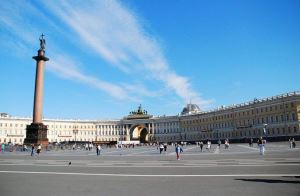
The former capital city of Russia, Saint Petersburg is now the nation’s second city and the third largest in Europe (after Moscow and London). Founded by Peter the Great in 1703, two decades before he established the city’s first university, Saint Petersburg has seen much political and social change – as the capital of the tsarist empire, epicenter of the 1917 Communist Revolution, and subject to three years under Nazi siege during the Second World War – along with a fair few name changes.
Sometimes referred to as the Venice of the North or Paris of the East, St Petersburg is an island city, built on 42 islands connected by hundreds of bridges, in the mouth of the Neva River. Its rich history is reflected in much of Saint Petersburg’s museums, theaters, galleries, and thousands of monuments dotted around the city. And for high culture, St Petersburg is unbeatable, with opera, ballet, literary greats, the world’s largest art gallery and more than 500 stunning baroque palaces on offer.
Leading universities in St Petersburg include Saint Petersburg State University and St. Petersburg Polytechnic University. The city was a new entry in the QS Best Student Cities index for the 2017 edition, placing 78th.
Tomsk 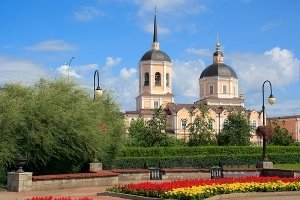
If you fancy heading deeper into Russia, and you happen to like snow, Tomsk may well be the perfect study destination for you. A small city in the heart of Siberia, Tomsk has a long history of educational excellence, and has particularly established itself as a leader in science and IT innovation. Today there are six universities in Tomsk, including Tomsk State University and National Research Tomsk Polytechnic University, both of which are ranked among the EECA top 50. An estimated 20% of the population of Tomsk is comprised of students, and you can expect to hear a wide variety of languages being spoken. There’s also lots to explore – beyond the labs and libraries lies a charming old town with vibrant arts, music and café scenes.
Russian university requirements 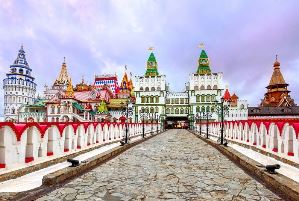
The majority of courses at Russian universities are taught in Russian. So if you plan to study in Russia, it’s likely that you’ll need to master the language first, and provide proof of language proficiency as part of your application.
If you don’t feel confident with your Russian language skills just yet, some Russian universities offer one-year preparatory courses for international students, designed to help you to get up to the required standard quickly. For those who have only a very limited knowledge of Russian, there’s also the option to undertake a program taught in the English language, which are offered at some Russian universities. Although some English-taught options do exist at undergraduate level, English-language master’s programs are much more common.
Depending on the university and your academic background, Russian university requirements may also include an entrance exam and/or an interview. The Russian academic year runs from September to June, split into two semesters.
Russian student visas, scholarships and costs 
Once you’ve been offered a place to study in Russia, the university’s international department will file an application for a Russian student visa on your behalf. This should take between three and five weeks and costs about US$40. All visas must be registered within seven business days after arriving in Russia. This visa will cover your stay for three months only, so if you’re planning to study in Russia for more than 90 days you’ll need to apply for an extension once in the country. For a longer stay you’ll also be asked to provide the results of a medical examination and HIV test.
A set number of state scholarships are available for foreign students each year, covering tuition fees, accommodation and medical insurance. These payments are currently RUB 75,000 (~US$1,200) a month, and do not cover travel or personal expenses, which you will need at least an extra $50 a month for.
Those without scholarships will need anywhere between US$6,000 and US$10,000 per year for fees and living costs, depending on the course and location. Tuition fees have increased recently in Russian universities, but are still relatively low compared to other international study destinations – depending on your program of study, they are likely to be around US$3,900-7,700 a year.
Students are also eligible to obtain part-time work, with a valid work permit, either on-campus or elsewhere. Some students may be able to gain exemption from having to apply for a work permit, but this is not automatic.
You should also consider gaining health insurance before arriving in Russia, to ensure you’ll be able to access healthcare if necessary.
Source : https://www.topuniversities.com/where-to-study/europe/russia/guide#tab=0
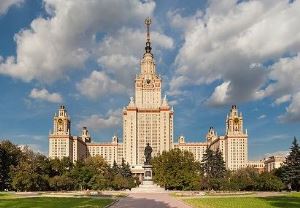

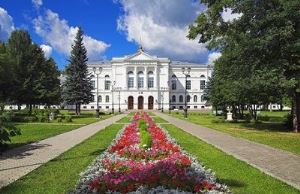
Hiç yorum yok:
Yorum Gönder